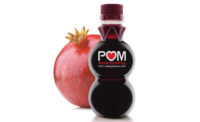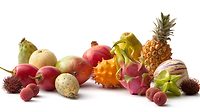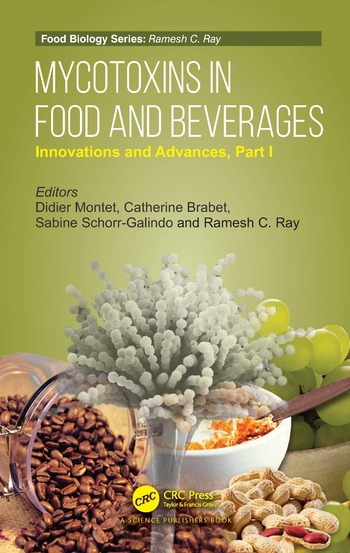Ingredient Spotlight
Exotic fruits offer functional appeal to beverage-makers
Consumer demand for unique, exciting drinks bring exotic fruits to the forefront

Image courtesy of Getty Images
Known as one of just four players in history to have won NBA championships with three different teams, professional basketball player Danny Green is quoted for saying: “If I’m in the mood for fruit, I’ll eat it. I try to get some kind of fruit throughout the day or every couple of days. I usually go for bananas to keep the cramps away.”
Like Green, many of today’s consumers turn to fruits for their functional properties. As such, experts note that within the beverage industry, this trend has led to increased use of exotic fruits in drink formulations.
“Consumers are actively seeking new and innovative ways to maintain their and their families’ health,” says Kyra Appleby, innovation technologist at Lawrenceville, NJ-based iTi Tropicals. “To address this demand, exotic fruits are now more commonly used in beverages to add vitamins, minerals, antioxidants and phytochemicals; boost juice content; reduce added sugar content; and potentially lower the caloric load.
“The focus is on creating beverages that not only taste great but also nourish the body,” Appleby continues.
Aside from wellness trends dominating the beverage industry, Appleby points to consumers’ continuously looking for something new and exciting to try.
“Consumers also continue to have a desire to try new things without venturing too far into the unknown and that’s where exotic fruits have a great fit,” she says. “They pair well with more familiar flavors, so beverage makers are able to create a familiar yet new beverage using exotic and familiar fruits.”
Further, in today’s global society, where consumers hail from a vast array of different countries, Appleby notes that exotic fruits can bring a sense of nostalgia to consumers.
“[M]any tropical fruits are prized for their ability to evoke a sense of home for these individuals,” she says. “It’s this sense of nostalgia and of home that drives them to seek out these fruits wherever they may go.”
Melissa Nasits, innovation director at Monin Beverage, Clearwater, FL, echoes similar sentiments, pointing to exotic fruits’ growing appeal as the global community becomes smaller.
“Social media is bringing foreign cultures and cuisines into mainstream Western consciousness. Seeing exotic fruit and flavors showing up on TikTok and in the hands of content creators also brings them directly into the limelight,” Nasits says. “As requests for beverages featuring exotic fruit flavors increase, we see the strength of the trend grow.”
Exotic fruits’ growing popularity
As beverage-makers continue to turn to exotic fruits to offer a plethora of benefits, experts highlight some of the most popular fruits utilized and their beneficial attributes.
Among the most popular exotic fruits being used are passion fruit, coconut water, acerola juice, dragon fruit and mango, iTi’s Appleby says.
“Passion fruit has the unique ability to mask off-flavors from high nutrient-value ingredients that may not taste great on their own,” she explains. “Coconut water has continued clout in the industry because of its naturally occurring electrolytes, vitamins and minerals, and its incredible versatility. Acerola has become increasingly popular in the beverage industry due to its naturally high vitamin C content.”
Known for their bright colors and exciting flavor profiles, Appleby points to dragon fruit and mango as popular because they have become more familiar with consumers in recent years.
“Açaí is also very popular in the beverage industry because it is a superfood containing a wealth of antioxidants, healthy omega fats, protein and dietary fiber,” Appleby says. “This nutrient profile makes it one of the top superfoods globally. Thanks to its high antioxidant content, it’s great for your health.”
Monin’s Nasits echoes similar sentiments, noting the increasing popularity of exotic fruits such as passion fruit, dragon fruit, mango and yuzu.
“Some exciting flavors gaining traction are ube, taro, lychee, kumquat and tamarind,” she says. “You can take tried and true recipes and create a new twist. Many of these tropical flavors also add bright colors to drinks, which pique customer interest and have an appeal all their own.”
When it comes to pairing traditional flavors with exotic fruit flavors, Nasits notes that it depends on the fruit being utilized.
“Generally, vanilla and honey will pair well with just about anything. Spice is fun to add to many of these typically sweet fruits as well,” Nasits explains. “Think Tajin or chamoy paired with mango, or jalapeño with pineapple.”
iTi’s Appleby points to flavor pairings as an opportunity where traditional and exotic fruits can be combined in unique and enticing ways.
“While we often think of common fruit flavors like strawberry, cherry, banana, orange, grape and the increasingly popular mango, there are many other possibilities,” she says. “Here are some of our favorite flavor combinations that bring together traditional and exotic fruits: mango peach, strawberry guava, passion fruit banana, mango passion fruit, strawberry acai and orange passion fruit.”

What’s in store
Before formulating, beverage-makers should be aware of several challenges associated with incorporating exotic fruits, including cost and sourcing, experts note.
“Some of these more exotic fruits are expensive, only available seasonally, and can be hard to find depending on your location,” Monin’s Nasits says. “You also have to take into consideration the flavor profile and how well it will be received by your audience. Palates are regional and not everything will resonate with customers.”
iTi’s Appleby echoes similar sentiments, noting that issues surrounding exotic fruits can extend beyond price point.
“Making a formulation that is new and exciting using exotic fruits is simple, but it can be difficult to find a reliable source for the materials,” she explains. “The best way to address these challenges is to have a highly valued relationship with your vendor that thrives on trust and transparency.”
Yet, as beverage-makers look to be the first to discover the next “it” flavor, Appleby notes that it’s not so much the next exotic fruit, but how best to utilize it.
“It’s not just about identifying the newest up-and-coming fruit, but rather finding the next application,” she says. “At our company, we see endless possibilities for utilizing exotic fruits in new platforms and markets.”
Looking forward, Appleby also anticipates that exotic fruits will continue to dominate in the functional beverage space.
“Acerola and coconut water, in particular, may continue to gain ground in the beverage industry due to their functionality,” she says. “Acerola puree or juice is a great way to incorporate vitamin C without using a significant amount of product, and it adds a lovely color to beverages. Coconut water is known for its hydrating properties and electrolyte content, but can also be blended to enhance other flavors and reduce calories.”
As beverage-makers continue to utilize exotic fruits to create new, exciting innovations, Monin’s Nasits predicts that consumer demand will only increase.
“As consumers become more aware of these additional fruit options and try them in more beverages, and inception progresses to adoption, we will see demand increase in a kind of snowball effect,” she concludes.
Looking for a reprint of this article?
From high-res PDFs to custom plaques, order your copy today!










